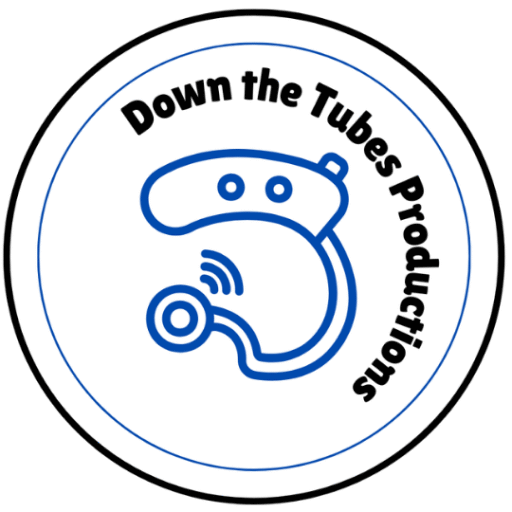
A short time ago, in a galaxy really really close, Hearing Things went to Symphony Hall in Boston to see the Boston Pops play the music of Star Wars. They played selections from all nine movies of The Skywalker Saga. Despite all the money that is thrown at teachers and librarians, we decided to be cheap and get seats on the second balcony. As luck would have it, that’s where the hearing loop is! But before I get into the hearing accommodations, I want to say a few words on the experience as a whole.
Chills. Literal chills.
Goosebumps rippled across my arms as the iconic first notes of the main theme filled the hall. A jolt of nostalgia made my breath quicken, a surge of excitement made my knees piston, a smile wide enough to land the Millennium Falcon on sprang onto my face. I’ve watched the movies roughly eleven-ty billion times. To be in the same place where the music was being played was a visceral experience. They went through the movies in order; they started with the prequel trilogy, moved onto the holy trilogy (with the intermission being after Empire), before finishing with the sequel trilogy. I’ve come to accept the first, will always love the second, and am still in the process of accepting the problematic mess that is the third. Smoothing out my turbulent feelings was the narrator; Jeremiah Kissel (whose last name is gloriously close to Kessel).
He was hilariously enthusiastic. He moved the story along from song to song, from movie to movie. He called out the uncomfortable, yet mercifully short-lived, love triangle between Leia, Han, and Luke; he “spoiled” the Emperor’s return in the sequel trilogy, and he never passed up the chance to make the hum and warble of a lightsaber. His performance was leaps and bounds better than what I thought it would be; him reading the opening crawl from each movie.
One quick non-hearing related hearing accommodation before I get into how things sounded.
The lights flickered to call people back to their seats as intermission ended and we scrambled back to see if Han was saved from the clutches of that big-boned gangster, Jabba the Hutt. I probably wouldn’t have marked it as significant had I not gone into the performance with an eye open for hearing accommodations. But that’s the same attention-getting method used by the Deaf Community. If mainstream society already makes use of that, I hope they can use that habit as a step up to other hearing accommodations.
Now then, let’s get on to the assisted listening system.
Venues are supposed to have signage announcing the presence of a T-coil. But we couldn’t find any. If there were signs that weren’t easy to find. Julie and I wandered after the concert in search of them. We only did so afterwards because we already knew of it. I had already learned of it on the hall’s website. Which I think is the reason so little attention is paid to physical signage. Still, though, I wish they would get some signs, for there are people a-plenty who don’t even know of assistant listening systems. That was what we did after the show. Before the show, we were twitching like Salacious B. Crumb eyeing Jabba’s tail.
As the eddy of anticipation wafted through the air, telling us the start of the performance was near, I switched on the T-Coil program with alacrity. But the announcements didn’t come through the T–coil. Momentarily deflated, I toggled back to my default program. Only to find the announcements had ended. The clapping that erupted as Keith Lockhart and Jeremiah Kissel took the stage needed no hearing accommodations. As Keith introduced the performance, and thanked the sponsors, I had no problem hearing. Symphony Hall is small. Smaller than I expected. I’d been there as a wee bairn on school field trips and after I grew up I saw the Dizzy Gillespie All Stars. But that was many years ago, so you must excuse my forgetfulness.
While the acoustics were great, I still had the same trouble I always have when I stream classical music; the softer parts of the score are below my hearing threshold. I also have trouble hearing mid-tone frequencies and so those sometimes foiled my bionic ears’ amplification powers. That said, the sound is fuller with a wider volume range than it has with my T-coil turned on.
I kept flipping between the default and the T-coil programs. Sometimes too quickly for my iPhone to deal with. More than once, it was like “Dude. Pick one already” and refused to change. I have my aids connected to in the Settings > Accessibility > Hearing Devices menu. This allows me to swipe down from the right corner to bring up the Control Center, tap the Hearing Devices option, and change my program. I did this during the Across the Stars number from Episode II because a lot of it I had trouble hearing. I would listen for a few seconds with my default program, then switch to my T-coil and compare what I heard. The T-coil did bring some of the softer sounds to my attention, which is what I was going for. But the overall sound changed dramatically too.
With the coil I can make out more frequencies but the sound is thinner, it lacks the full-swing of the frequencies. It also seemed to compress the volume of the orchestra into a smaller volume range. The crescendos weren’t as high and, I assume, the decrescendos weren’t as low. But I don’t know. Because if it goes too low, I can’t hear it. Then there’s the quality of the sound.
As I’ve said before, my Oticon aids process sounds in a unique, proprietary, way. That way is altered slightly when it’s processing sounds from the T-Coil. There’s an almost staticky quality to everything. It’s not a poor quality, it’s just different. You know the feeling of having a slightly-too-large T-shirt under a sweatshirt? It’s the auditory analogue.
The T-coil also picks up more background noise than my aids. Sorta. My aids pick up the periodic shifting and unintelligible whispering of those in the seats around me. The T-Coil picks up the rustling of clothes and the crinkling of paper of those in the space around the microphones. It was distracting. It was also enlightening. The brain is amazing. When I first got my bionic ears, it was an extraordinary challenge to learn how to filter out background noise that I’d spend decades not hearing. Now, using my T-Coil, the quality of that background noise shifted. And in so doing, re-introduced the challenge. This is something a normal-hearing brain has little problem doing.
Ultimately, I chose to forgo the T-Coil. Had it been more of a spoken performance, I likely wouldn’t have. I know this because when Jeremiah was doing his thing, I missed bits and pieces as his enthusiasm roller-coastered the volume of his voice. But the fuller sound quality of my default setting I felt was better-suited to the music. I still have a wide-enough range of my hearing that allows me to do this.
What about you, fellow bionic ear buddy? Do you use your T-Coil at music venues that offer one?
Getting into it,
Pew! Pew! went the narrator.
Aren’t we all just kids?

Leave a Reply